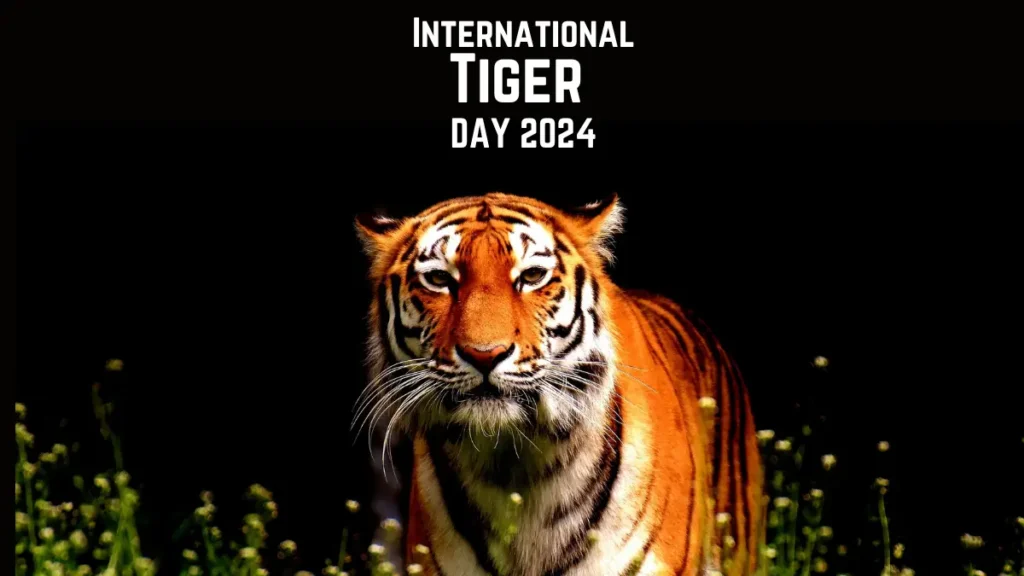International Tiger Day 2024: Date, History, and Significance
Introduction
International Tiger Day, also known as Global Tiger Day, is observed annually on July 29th. This day aims to raise awareness about tiger conservation, promote the protection of tiger habitats, and support efforts to prevent tiger poaching. With the declining population of tigers, this day serves as a crucial reminder of the need to preserve these majestic creatures and their natural habitats.
Importance of Tiger Conservation
Tigers play a significant role in maintaining the health of ecosystems. As apex predators, they help control the population of herbivores, which in turn maintains the balance of the ecosystem. The decline in tiger population indicates a disruption in the ecological balance, affecting other species and the environment. Conservation efforts are essential to ensure the survival of tigers and the health of our planet.
Global Efforts to Save Tigers
Countries with tiger populations, such as India, Russia, and Indonesia, have implemented various measures to protect these big cats. Initiatives like the Global Tiger Recovery Program (GTRP) aim to double the tiger population by 2022. These efforts include strengthening anti-poaching measures, conserving tiger habitats, and promoting sustainable development practices that do not harm wildlife.
Role of Communities and Governments
Local communities and governments play a pivotal role in tiger conservation. Engaging local communities in conservation efforts ensures the protection of tiger habitats while providing sustainable livelihoods. Governments must enforce strict laws against poaching and illegal trade of tiger parts, along with promoting conservation education and awareness programs.
Challenges in Tiger Conservation
Despite efforts, tiger conservation faces several challenges. Habitat loss due to deforestation and human encroachment remains a significant threat. Poaching for tiger parts, used in traditional medicine and as trophies, continues to endanger tiger populations. Additionally, climate change impacts tiger habitats, making conservation efforts more complex and urgent.

Why This News is Important
Raising Awareness
International Tiger Day is vital for raising global awareness about the plight of tigers. By highlighting the challenges faced by these magnificent creatures, this day encourages individuals, organizations, and governments to take action towards their conservation. Awareness leads to education, which is the first step towards change.
Promoting Conservation Efforts
This day provides a platform for promoting various conservation efforts undertaken worldwide. It showcases successful initiatives and encourages collaboration among countries, organizations, and communities. Promoting such efforts is crucial for the continued survival of tigers and the preservation of biodiversity.
Highlighting Ecological Importance
Tigers are not just iconic animals; they are integral to the health of ecosystems. By emphasizing their ecological importance, International Tiger Day underscores the broader environmental impact of tiger conservation. Protecting tigers means protecting entire ecosystems and ensuring ecological balance.
Encouraging Policy Changes
International Tiger Day often leads to discussions and policy changes regarding wildlife protection. Governments are urged to implement and enforce stronger laws against poaching and habitat destruction. Such policy changes are necessary for long-term conservation success.
Inspiring Future Generations
By educating the younger generation about the importance of tiger conservation, International Tiger Day inspires future conservationists. Children and young adults are the future stewards of our planet, and instilling a sense of responsibility towards wildlife in them is crucial for ongoing conservation efforts.
Historical Context
Origin of International Tiger Day
International Tiger Day was established in 2010 at the Saint Petersburg Tiger Summit, where representatives from 13 tiger range countries pledged to double the tiger population by 2022. This ambitious goal, known as Tx2, marked a significant step in global tiger conservation efforts.
Decline in Tiger Population
The 20th century witnessed a dramatic decline in the global tiger population due to habitat loss, poaching, and human-wildlife conflict. From an estimated 100,000 tigers in the early 1900s, the population dwindled to around 3,200 by 2010. This alarming decline highlighted the urgent need for concerted conservation efforts.
Notable Conservation Successes
Despite the challenges, there have been notable successes in tiger conservation. Countries like India have seen an increase in their tiger populations due to dedicated efforts in habitat protection, anti-poaching measures, and community involvement. These success stories serve as motivation and models for other countries to follow.
Global Tiger Recovery Program (GTRP)
The GTRP, launched in 2010, is a comprehensive initiative aimed at doubling the wild tiger population by 2022. It involves collaboration among governments, NGOs, and local communities. The program focuses on habitat conservation, strengthening law enforcement, and promoting sustainable development practices.
Role of International Organizations
International organizations such as the World Wildlife Fund (WWF) and the Global Tiger Forum (GTF) play a crucial role in tiger conservation. They provide funding, expertise, and support for various conservation projects worldwide. Their efforts have been instrumental in raising awareness and driving global initiatives for tiger protection.
Key Takeaways from International Tiger Day 2024
| Serial Number | Key Takeaway |
|---|---|
| 1 | International Tiger Day is observed on July 29th annually. |
| 2 | Tigers play a crucial role in maintaining ecological balance. |
| 3 | Global initiatives aim to double the tiger population by 2022. |
| 4 | Local communities and governments are essential for successful conservation efforts. |
| 5 | Despite challenges, there have been notable successes in tiger conservation. |
Important FAQs for Students from this News
1. What is International Tiger Day?
International Tiger Day, celebrated on July 29th, aims to raise awareness about tiger conservation and promote efforts to protect these endangered animals and their habitats.
2. Why is International Tiger Day important?
The day highlights the critical need for tiger conservation, showcases successful initiatives, and encourages global collaboration to combat threats like poaching and habitat loss.
3. What are the main threats to tiger populations?
The primary threats include habitat loss due to deforestation, poaching for tiger parts, human-wildlife conflict, and climate change affecting their natural habitats.
4. What is the Global Tiger Recovery Program (GTRP)?
The GTRP is an initiative launched to double the wild tiger population by 2022. It focuses on habitat conservation, anti-poaching efforts, and promoting sustainable development practices.
5. How have tiger populations changed over the years?
Tiger populations have significantly declined from an estimated 100,000 in the early 1900s to around 3,200 by 2010 due to various threats. Conservation efforts have led to some recovery in recent years.
Some Important Current Affairs Links


















